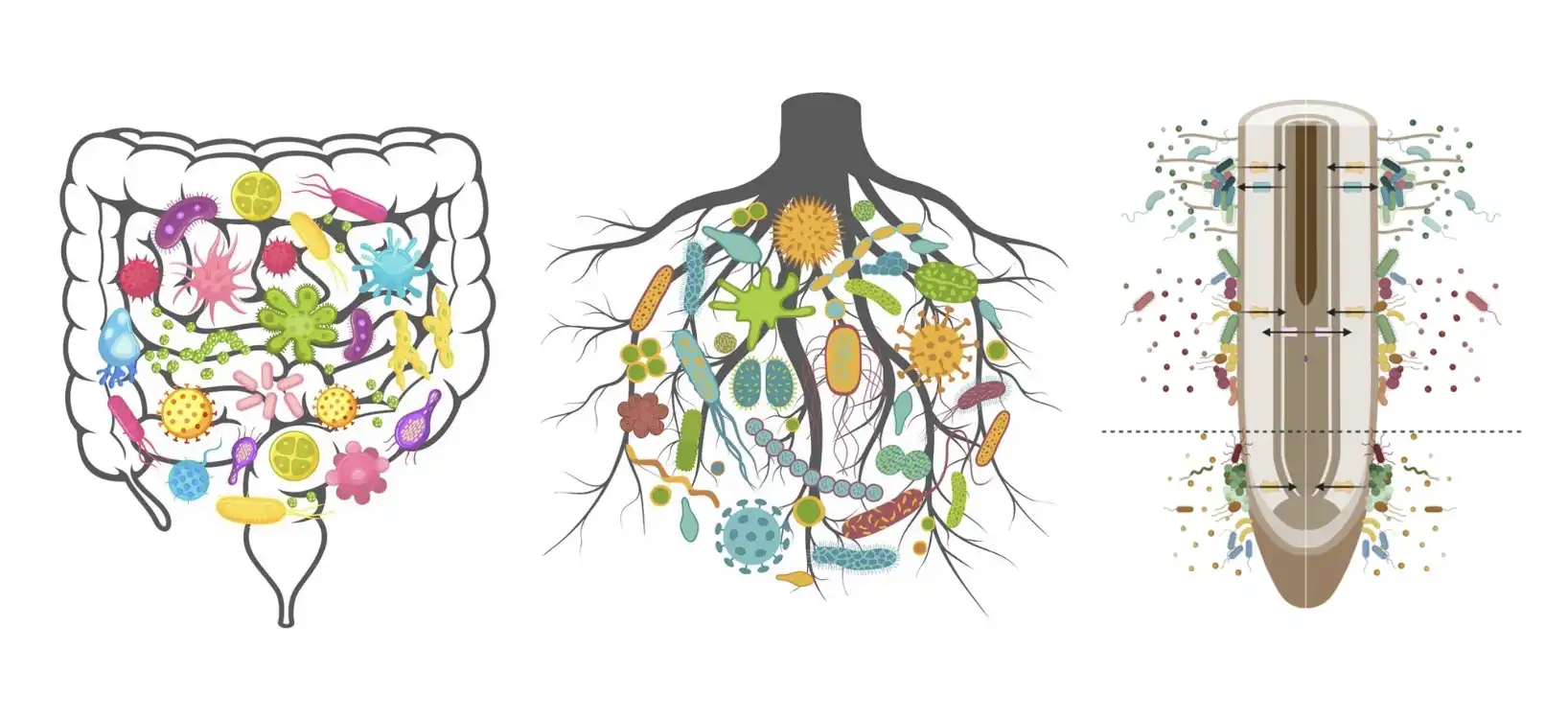Post written by Carlos González Sanz, Nerea Valdebenito Alamar, Anamarija Primc and Shukanta Saha during the SPS-CEPLAS Summer School 2024
Microbes living in plant roots benefit from the sugars generated by plants and losing their transport to the roots can affect plant health.
The soil contains bad and good microbes and depending on the substances released by plants, the microbes surrounding them can change, directly affecting plants´ health. Recent findings with a newly designed method by a group of German plant scientists show that plants share the different sugars they produce with various types of microbes in different areas of their root length.
Nutrient Absorption: A Parallel with Human Digestion
Similar to how humans absorb different nutrients in different parts of our guts due to other microbes, plants communicate with their microbes by releasing nutrients through the roots, and each part of the root has a different function. The carbon dioxide plants absorb from the atmosphere is transformed into sugars in the leaves through photosynthesis. While the sugars help to build new organs of the plants, they also travel to the roots and plants release them where microbes can use them for feed.
Innovative Research Methods: Targeted Sugar Transport in Roots
A newly designed plant-growing device, similar to a CD case, has been designed to mimic the soil environment and simultaneously study the different root areas and the associated microbes in a simplified setting. Surprisingly, the researchers’ team found that in the same way that when driving a car on a highway we would select the closest exit to reach our final destination, sugars from the leaves travel to specific zones of the roots where they will be later available for the microbes.
Conclusions and Implications
What was the conclusion of the study? Modifying the way sugars travel to the roots and where they end up could have harmful effects on the relations between the plant and the microbes. Understanding plants´ sugar transporters and their localization in the root could be a key point to understanding the communication and relation within their microbial surroundings. Disturbance on this transport could cause “bad” microbes proliferation, therefore affecting plants´ health.
Image: Modified from Nina Vinot (https://medium.com/illumination/gut-microbiome-soil-microbiome-different-ecosystems-same-principles-2231ae0637a) and Loo et al. 2024.
Read the paper: Loo EP et al. Sugar transporters spatially organize microbiota colonization along the longitudinal root axis of Arabidopsis. Cell Host Microbe. 2024 doi: 10.1016/j.chom.2024.02.014.






